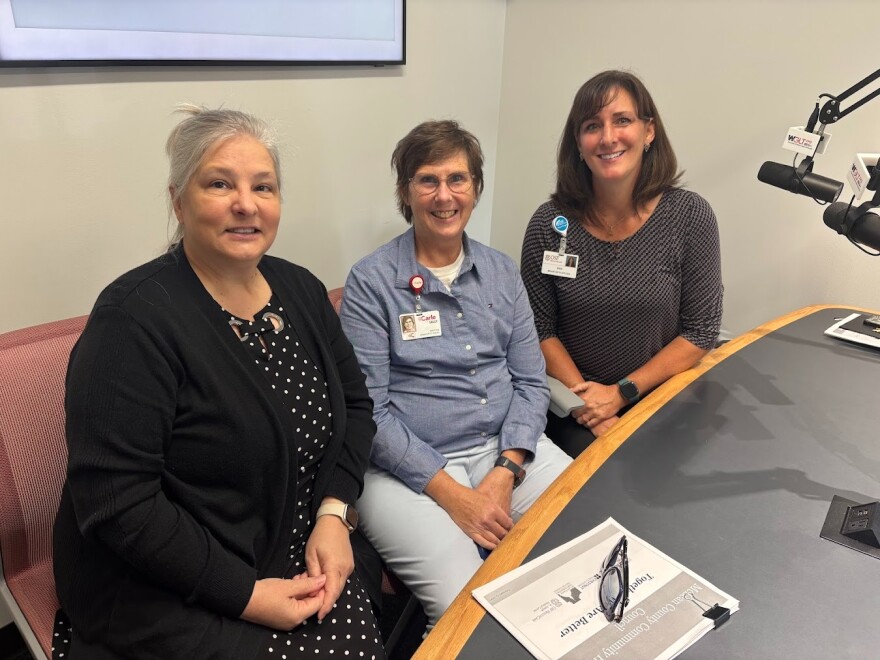A foundational planning tool used to tackle some of McLean County’s most pressing health challenges has just been refreshed.
It’s the first update to the Community Health Needs Assessment in three years. The document packed with data will be used in many ways, including the creation of a new three-year health improvement plan. The three significant health needs selected for action are access to care, behavioral health (including mental health and substance abuse), and healthy eating and active living, the same as last time.
The assessment is based in part on a survey of 725 McLean County residents, conducted in 2024. That survey found people reporting decreased access to medical care, dental care, prescription medication, and counseling, compared with those who took the 2021 survey. It’s not exactly apples-to-apples, as it’s two different survey groups, but it suggests access-to-care gaps are persistent.
The top three reasons for not being able to access medical care were “too long to wait” (88%), “could not afford” (73%) and “no insurance" (46%).
“The numbers in the survey, yes, indicate that access to care has worsened per se. I do think there have been things happening in our community that have increased access, particularly for some vulnerable populations,” said Sally Gambacorta with Carle Health, who worked on the assessment.
That includes the launch of three mobile health clinics in McLean County, including one operated by the health department that visits rural communities. Access to dental care, previously identified as a need, has improved with the 2024 opening of Chestnut Health Systems’ new clinic in west Bloomington, augmenting other dental options provided by the Community Health Care Clinic and health department.
The survey also found a “significant” shift in where people go for care when they’re sick — 44% of survey respondents said urgent care, up from 19% in the 2021 survey. Clinic/doctor dropped from 72% to 46%.
Urgent care’s more flexible hours likely play a role in that. There also may be generational factors at play, said Erin Kennedy with OSF HealthCare, who also worked on the assessment.
“Some of the older generation really want a positive relationship with their provider, and they’ve had their [same] provider for 30, 40, 50 years. And we’re seeing perhaps this newer generation that’s coming up, dipping their toe into having the adult responsibilities,” Kennedy said. “Maybe they’re just like, ‘Hey, I’m just gonna go here or there based on what’s convenient for me,’ and it’s not about the relationship. It’s about how quick and quality the service is being provided.”
Behavioral health
Behavioral health is another repeating major health need in the 2025 assessment.
About 1 in 5 people (19%) of survey respondents reported their mental health as poor, with 62% as average, and 19% as good.
One acute area of concern is adolescent suicide and self-inflicted injury leading to ER visits, said Gambacorta. McLean County averages 191 ER visits per 10,000 young people between ages 10 and 17, well above the Illinois average (98.9 ER visits per 10,000), according to the assessment.
It’s even worse for Bloomington’s 61701 ZIP code (266 ER visits per 10,000) and girls (276 ER visits per 100,000). The “rate is trending unfavorably, in a statistically significant direction,” the assessment found.
“We’re not doing as great in comparison with other counties in Illinois for adolescent suicide and self-inflicted injury. We’re continuing to see significant issues with that — adolescents going to the emergency room for that. That’s an area that’s been consistent throughout all of the iterations of the joint (Community Health Needs Assessment),” Gambacorta said.
One advantage McLean County has in facing these challenges is a willingness to collaborate — as evidenced by the health assessment itself. It’s a joint effort between Carle BroMenn Medical Center, McLean County Health Department, OSF St. Joseph Medical Center, and Chestnut Health Systems.
This type of collaboration is rare, said Dietra Kulicke from Chestnut, which also operates in other counties.
“We’ve seen more cross-communication. More attempts for a systemic approach to behavioral health care. A lot of collaboration,” said Kulicke, who worked on the assessment, too. “Expansion of services. Diversity in services. And some new programming into the community and an expansion of existing [programming].”
This new version of the Community Health Needs Assessment will be used in many ways, in part to develop a new three-year, action-oriented Community Health Improvement Plan. (The current one expires this year.) Priority action teams will identify strategies and specific interventions to address the health priorities and work toward achieving specific goals.



